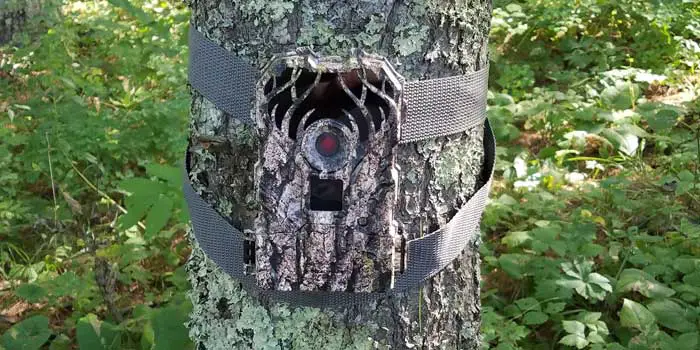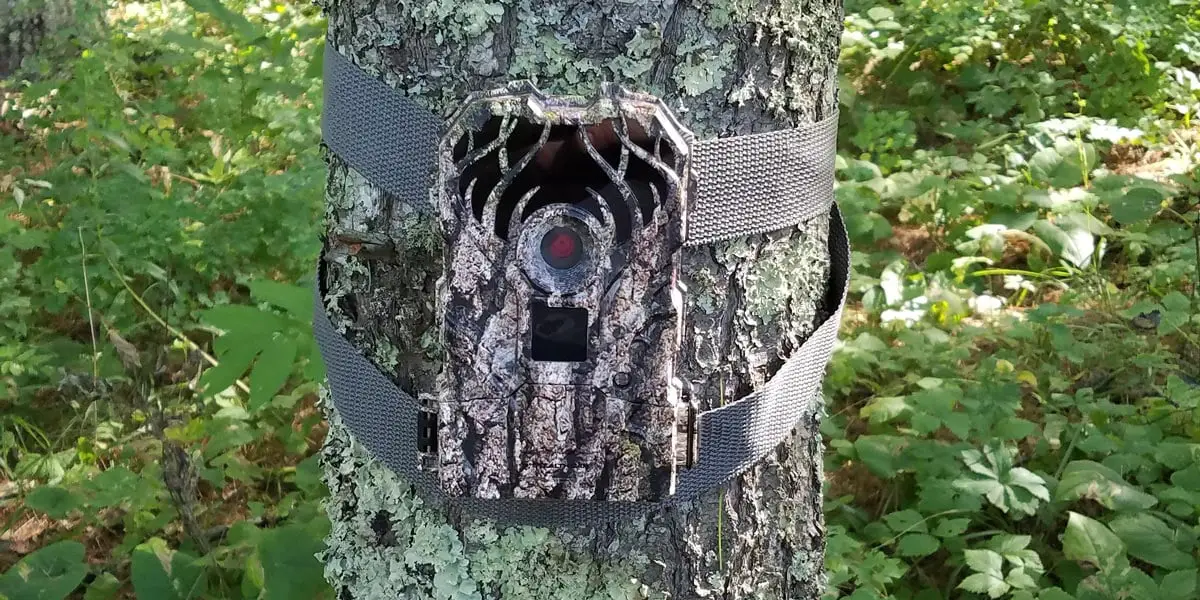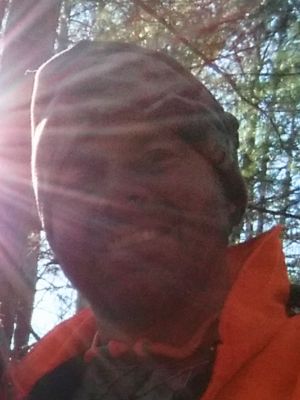Whether you have used trail cameras for a long time or if you just purchased your first camera you may have heard people who talk about “letting their trail camera(s) soak.” If you’re not familiar with this term, you might think it refers to a camera’s ability to withstand the elements, but that’s not correct. Instead the phrase “letting a trail camera soak” refers to setting a camera up and then leaving it undisturbed for a long period of time before checking to see what it has captured.
Now that we know what it means let’s discuss the benefits of letting your trail camera soak, how long your should leave your cameras unattended, and what you should look for when buying a trail camera that you want to let soak for extended periods of time.
Table of Contents
What Are the Benefits of Letting Your Trail Camera Soak?
There are two main benefits to leaving your trail cameras in the woods for extended periods. First, it allows for the elimination of human scent and disturbance in the woods. Second, your trail cameras will collect data that would otherwise be missed.
Elimination of Human Scent and Disturbance
Whenever you head out to the woods to set up or check your trail camera, there is a good chance that you could spook deer or other wildlife either by accidentally walking up on them and chasing them out of the area or by leaving your scent in the woods. I know it has happened to me. I have scared up deer even when going out at what has been historically the quietest time of the day. I have also seen deer as well as other animals come right up to trail cameras I recently left to investigate the scent I must have left behind (despite my efforts to not leave any scent in the woods). Older more experienced deer, especially bucks, often won’t come and investigate the human scent. They already know what it is and instead of investigating they will just leave the area entirely, at least for a while.
So how do we avoid these situations? The answer is simple. Let your trail camera soak for a while before you go to check what it has captured.
By letting your camera soak you are allowing your scent to dissipate giving the animals in the area, including any you might have scared up, a chance to get back into their normal routines. Plus, any animals who might have spotted the camera will have a chance to habituate themselves to its presence without being spooked.
You Will Collect Data That Would Otherwise Be Missed
If you want to collect the maximum amount of data on deer behavior or whatever other animals you might be monitoring, you want to leave your trail cameras out in the field for extended periods of time. After the impact from any human disturbance has dissipated and your trail camera soaks in the woods for an extended period of time it will have an opportunity to amass an immense amount of data that otherwise would have been missed.
First and foremost if you let your camera(s) soak you will get a more accurate population count of the animals that are in the area.
However, if you are willing to dig a little deeper into all of these extra pictures and videos your cameras have captured you can learn a lot about animal behavior. I like to group this extra data into two types: weather-related data and seasonal data.
Weather-Related Data
Weather conditions can have a big impact on the behavior of deer and other wildlife, which means that documenting how specific environmental conditions impacts behavior can give you an edge when hunting season arrives. Leaving your trail cameras in the woods for longer periods of time will allow them to document a wider variety of weather conditions, helping you to better understand how specific weather conditions impact behavior.
In addition to the pictures and videos showing you if it was raining or snowing modern trail cameras can tell you so much more. Thanks to their image stamp, which you should always have turned on, you can also see the date, time, and temperature as well as the moon phase.
When I sit down to review the pictures and videos from my trail cameras I pay attention to these details and look for patterns of behavior. By doing this I can learn a great deal about the behavior of the deer in the area sometimes narrowing patterns down to specific bucks that I am looking for.
Seasonal Data
Having trail cameras out in the field for several months at a time will help you better understand which areas are most used with the changing of the seasons as vegetation and food sources change. If you run multiple trail cameras you will begin to see that some areas are more heavily utilized at certain times of the year while other areas have activity throughout the entire year.
If you analyze data from different years, you can develop a strong understanding of how seasonal changes affect animal behavior in a specific area. This will help you create an accurate picture of what type of wildlife activity you should expect to see in an area throughout the year. Knowing these seasonal patterns will give you a major advantage when hunting season arrives.
How Long Should You Let Your Trail Cameras Soak?
We have an entire article dedicated to the topic of when and how frequently you should check your trail cameras and how to check them in a way that isn’t disruptive to deer and other wildlife. There is no one-size-fits-all answer to how long you should leave your trail camera soak. The length of time you leave your trail camera soaking will vary based on several factors including the camera’s location, what time of year it is, and why you want to check it.
Ultimately, the best advice is to let your trail cameras sit as long as possible and only check them when you need to. Reasons why you may need to check your trail cameras usually fall into two categories.
The first reason you to may need to check a camera is to make sure it stays running and keeps collecting pictures and videos. Maybe you need to replace its batteries or maybe you are worried about the memory card running out of space.
Another reason why you may need to check your cameras is if you need the information they collected to make important decisions, like where to put up deer stands before hunting season, or where to hunt once the season arrives.
What Are the Consequences of Not Letting Your Trail Cameras Soak?
First and foremost, not letting your cameras soak for any significant length of time will dramatically reduce the amount of data you get from your camera setup. If you are not waiting long enough before checking your trail cameras, you may not be getting the most accurate or complete information. This could lead to incorrect decisions when it comes to hunting or managing your land.
Plus, if you are interested in keeping track of the big bucks on your hunting property there is an increased chance you will not get any photos or video of the bucks you are after if you do not allow your cameras to soak for enough time. This is especially true if a buck was alerted to your presence when you set up your camera or checked it last and was spooked out of the area. It will take some time before he comes back into the area and gets captured by your camera.
Would you ever go to a doctor with a medical concern and be content with them not getting all the diagnostic information or having a test interrupted before giving you a diagnosis? Of course you wouldn’t, but if you don’t let your trail cameras soak you could be making the same sort of mistake. You could be making important decisions about your hunting season without having all the information.
Tips/Things to Consider When Buying a Scouting Camera
If you want to put a trail camera out in the woods and let it soak for an extended period of time there are a few things you should keep in mind whether you are planning on using a trail camera you already own or if you are looking to buy a new trail camera. These things all relate to the importance of maximizing the camera’s run time
Batteries
Most trail cameras these days can last quite a while on a set of batteries. However, if you want to maximize the amount of time you can leave your trail cameras unattended in the field using the right batteries is critical.
For the longest battery life, you will want to make sure that you are using high-quality lithium batteries. Lithium batteries have a much longer life than alkaline or rechargeable batteries and will provide superior performance throughout their life cycle. In addition, lithium batteries are able to perform in the extreme temperature conditions that often occur in the field. This is especially important if you are using a camera in the winter or summer when temperatures can reach below 0°F or above 100°F. If you use a lower quality battery you may find your camera not lasting as long or even failing to function at all when you need it most.
The batteries suggest using are Energizer Ultimate Lithium batteries, which is what we like to use in our cameras. These batteries have been engineered to operate at temperatures as high as 140°F and as low as -40°F. If you want to learn more about why we suggest using lithium batteries in trail cameras you can check the article we published on the best batteries for trail cameras.
What Is the Maximum Size of SD Card the Camera Can Accommodate?
This is another tip that may seem obvious but, many people make the mistake of using too small of a memory card. A lot of times trail camera manufacturers bundle in a trail card with their cameras to make the camera more enticing. However, unless the SD or micro SD card isn’t the maximum the camera can accommodate you are selling yourself short in terms of how long you can leave it in the field, especially if you like to record videos.
Most modern trail cameras will be able to accommodate memory cards with capacities of up to 32GB. So the minimum capacity I would use for a camera that I want to let soak would be 32GB.
That said, a lot of cameras these days, especially cameras that can capture higher resolution pictures and videos, can handle memory cards with higher capacities. If you have one of these cameras you should seriously consider getting the maximum capacity memory card your camera can use. If you are not sure, you can check your owner’s manual or contact the manufacturer or check on their website.
If you are in the market for a memory card for your trail camera and would like to learn more about what you should look for, you may want to read our recent article on how to choose the best SD card for trail cameras.
Check the Settings on Your Trail Camera
Trial cameras these days come with a wide variety of customizable settings. The options you choose can have a huge impact on battery life.
For people using a trail camera with an adjustable flash, it’s important to note that if you end up needing to select the brightest setting possible it will drain your battery more quickly. If you have a trail camera with an adjustable flash be sure to experiment with the flash settings and try to find the setting that uses the least amount of power possible.
Most cameras allow you to choose between taking pictures or videos, and the length of the video. My favorite, on the cameras that have it, is the Photo + Video mode. However, if you’re going to be recording videos, be aware that they will consume more power than pictures and this is even more true at night. Many cameras have an adjustable video length, so if you like to use your cameras to record videos you may want to opt for a shorter length.
Solar Panels and Other External Power Sources
Using a solar panel or another external power source can help allow you to leave your trail cameras in the field pretty much indefinitely regardless of the settings you select.
While there are a few trail cameras with built-in solar panels, the good news is that most trail cameras today have an input for an external power source. This means that you can easily connect a solar panel to the camera to keep it powered up, or you can use a battery pack to keep the camera running for extended periods of time.
With that being said, you decide that using an external power source is right for your situation, there are a lot of affordable solar panels for trail cameras out there.
Consider Getting a Cellular Trail Camera
If you really like the idea of letting your trail camera soak so you can get that data on deer behavior that is undisturbed by human presence, but you need to get the pictures and videos more frequently you may want to consider investing in a cellular trail camera.
Luckily, the prices of cellular trail cameras have really come down during the past several years with several very affordable options being available. After your initial investment, you can get the information you need sent to you for just a few dollars a month. Not only could a cellular trail camera save you both time and money by not requiring you to physically check the camera yourself, but the data your receive could keep you from wasting time on unproductive stands.
If you think you might be interested in getting a cellular trail camera you can find models with the features you are looking for and read our reviews of those cameras by using our free Find Your Perfect Trail Camera Tool.
Final Thoughts
As hunters, we often put a lot of time and money into our hunting season. So if you’re going to invest in trail cameras to help you manage your property or hunt game, you need to be patient and give the cameras time to do their job. Checking your cameras too soon can lead to inconclusive results and missed opportunities. If you don’t let your trail cameras soak long enough and you use the data they collect to make important decisions, like where to hunt or put up stands, you may be disappointed with your results at the end of the season.
Last update on 2024-04-26 at 15:55 / Affiliate links / Images from Amazon Product Advertising API












